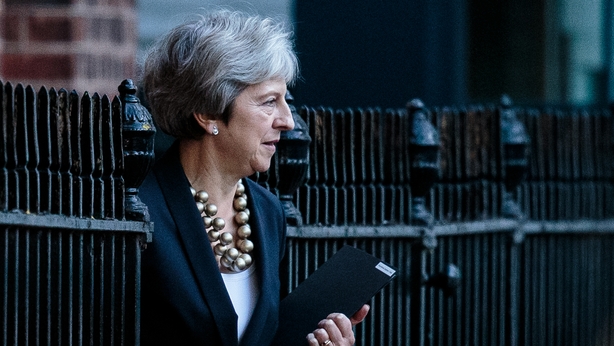Another day - another crisis. As Theresa May’s leadership lurches from rumour to counter-rumour about how long she may have left as Conservative Party leader, some things remain steadfast. Namely, Mrs May. While she has weathered many storms, none have as yet seen her leadership keel over. In fact, they haven’t yet managed to materialise into a cogent and comprehensive leadership challenge.
The latest threat came this week as Mrs May met backbenchers in what had been billed as a ‘showdown’. In the end, it was anything but. Perhaps practice has made perfect by now. Theresa May has faced enough of these meetings to know what needs to be done in advance to ensure she is supported. In a longstanding tradition at these events, desks were banged as the Prime Minister walked in - a noisy welcome designed to send a message to the journalists huddled at the door as much as to provide a welcoming soundtrack for the party leader.
At this week's meeting, the Prime Minister was helped by anonymous briefings from some of her MPs to the Sunday papers which used unnecessarily violent terms such as ‘twisting the knife’ and suggesting Mrs May ‘bring her own noose’ to the meeting. The phraseology used might have been intended to ramp up the Shakespearean drama. Instead it managed to look at best hysterical, and at worst, menacing. Many MPs found themselves getting to their feet in the Commons on Monday to roundly condemn the language used. Some no doubt hoped their condemnation could also be read as denial of involvement. Such vitriol at the weekend made it harder for those MPs who were so inclined to launch any direct attack on Mrs May’s leadership at the meeting this week.
And so Theresa May’s premiership survives - for now at least.
But it survives in spite of Theresa May, rather than because of her. The leadership hasn’t changed because the conditions required for a leadership challenge haven’t changed. Firstly, the numbers: 48 MPs who are unhappy with the Prime Minister must write to the chairman of the 1922 Committee (named for the year in which its founding MPs were elected) calling for a vote of no confidence. Rumours swirled this week that the 48 had been reached, but they - yet again - proved unfounded. The process is opaque so no one other than the chairman knows how many letters have been received so far. Some may have been sent months ago and some only in the last hours. That also means that co-ordination becomes more difficult. Some people may imply to colleagues that they have sent a letter when they haven’t, and vice versa. Of course it also means that the party could stumble into a leadership contest without really planning to.
Whatever about reaching the 48 MPs though, Mrs May’s enemies know reaching their next critical number could prove far more difficult. If Mrs May is to lose the contest outright, then 158 MPs have to vote against her. That is a far higher threshold. Even among MPs who are not Mrs May’s biggest cheerleaders, there’s a concern about the lack of a credible leadership candidate to take over from her. A divisive campaign to elect a leader is always a risk, but at such a critical time in Brexit talks it moves from risky to foolhardy.
The added risk for those who want Mrs May gone is that were she to win a leadership battle she is granted immunity from having to face another for twelve months. Few anticipate Mrs May making it far beyond the Brexit departure date of March 29. But then, in the early hours of June 9, 2017, as it became clear the Conservatives had lost their overall majority, few would have predicted Theresa May would still be in office now.






